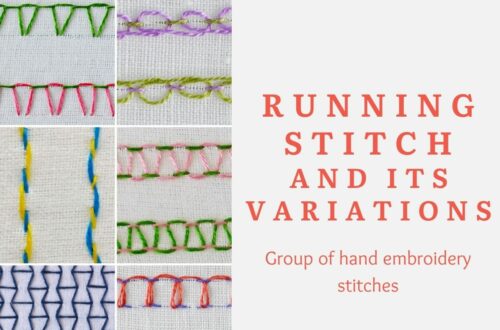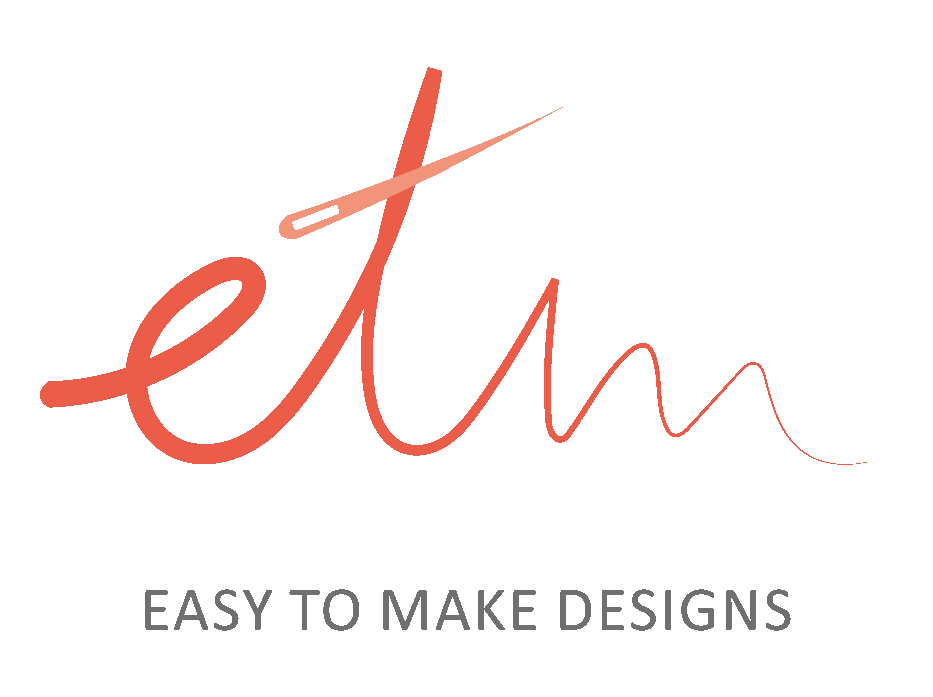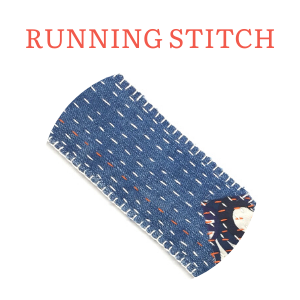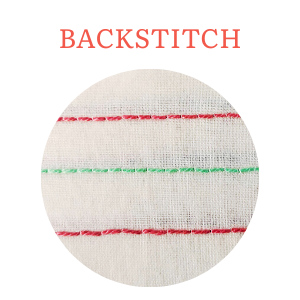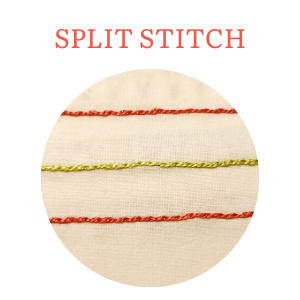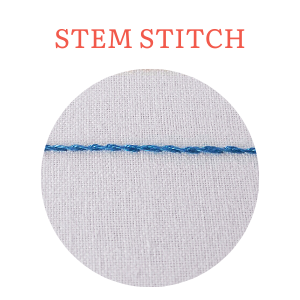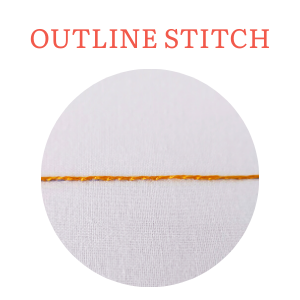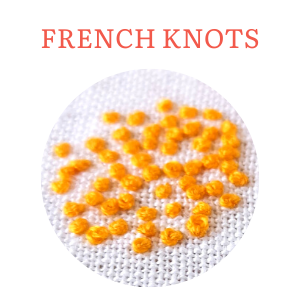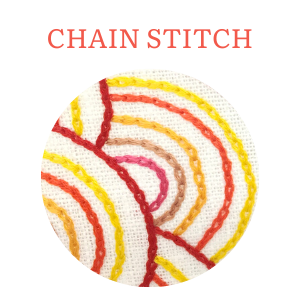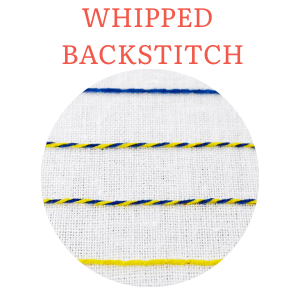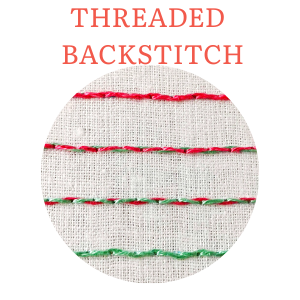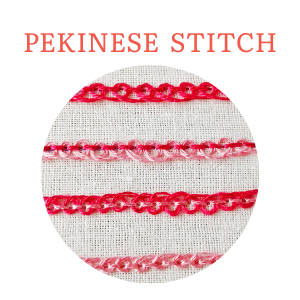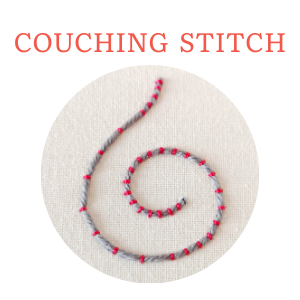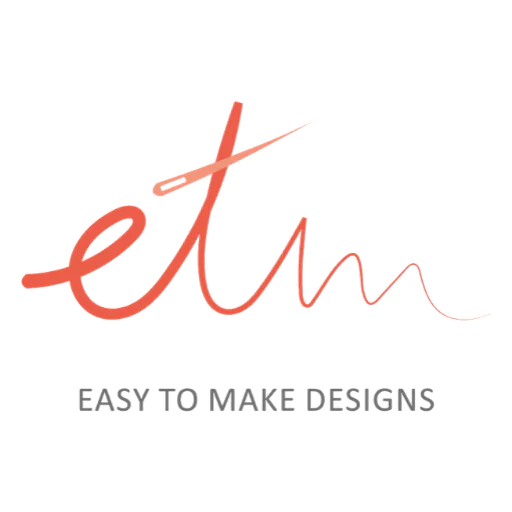
Best embroidery stitches for outlines
According to the dictionary, the outline is a line or set of lines enclosing or indicating the shape of an object in a sketch or diagram.
In hand embroidery, the outline is a set of stitches that indicate the shape of an object or design.
In this article, I listed some best hand embroidery stitches for outlines. Let’s see them all.
Note: If you click the colored link on the stitch’s name, you will find a video tutorial of that stitch! Watch them and learn the outline stitches you like.
Running stitch
The running stitch or straight stitch is the basic stitch of hand embroidery, on which all other forms of sewing are based. The stitch is worked by passing the needle in and out of the fabric. The needle is always pushed through the cloth, starting on the side and ending on the other side. Varying the length of the stitches and the thread’s thickness, you can create very different outlines of the shapes.
Backstitch
The backstitch is made backward to the general direction of sewing. In hand embroidery, this stitch forms the lines and is most often used to outline shapes and add fine detail to an embroidered picture. You can also use the backstitch for lettering. This stitch can be worked both straight and curved. You can make even the smallest and most complex curves by adjusting the lengths of the stitch.
Split stitch
The split stitch is a perfect choice for any pattern that involves outlining. Also, this stitch is a go-to when you need outlining for satin stitches as it has a smooth surface of the line and will support a smooth, clean edge for the satin stitch.
Stem stitch
The Stem stitch makes a rope-like line. How heavy the rope depends upon the thread you use. Stem stitch can be very delicate and can be used on the most delicate embroidery pieces. Or it can be bold. This stitch is handy if you need to outline curves, waves, or little circles. Also, stem stitch works well as an outline for the satin stitch.
Outline stitch
Outline stitch and Stem stitch are two names that we often use interchangeably. Also, they look very similar. But they aren’t the same thing. The main difference – the position of the working thread while making the embroidery. As you work Outline stitch from left to right, always keep the working thread above the stitching line.
Read more about the difference between stem stitch and outline stitch HERE.
French knots
The French knot stitch is an embroidery technique in which the thread is knotted around itself in a specific way.
Usually, this stitch is used for filling or adding some detail to the embroidery design. Still, it can work well as an outline stitch too. Just think of a cloud shape outlined with french knots 🙂 This dotty outline will create a soft and fluffy visual effect.
Chain stitch
Chain stitch is an embroidery stitch in which a series of looped stitches form a chain-like pattern. This simple stitch is very versatile, and it’s great for outlining. Chain stitch is very handy when you have to embroider flowing, curvy lines.
Did you know that chain stitches can be made in two different ways? You can make regular and reverse chain stitches. Try them both and choose which one is your favorite, or use them both, as sometimes it’s convenient to switch from one direction to another.
Whipped back stitch
A whipped backstitch is an embroidery stitch made in two steps. First, we embroider a simple backstitch and then whip it with another thread. You can use the same color thread to make a raised outline or two contrasting colors to create a rope-like outline.
Threaded back stitch
Threaded backstitch (also called laced backstitch) is a hand embroidery stitch made combining the foundation stitch (backstitch) and threading.
After you embroider the backstitch, lace the second thread through the backstitch without entering the fabric or crossing the backstitch.
You can embroider the threaded backstitch in a single color and create a wavy outline or choose two contrasting colors to create exciting patterns.
Pekinese stitch
Pekinese stitch has a lot of different names. It is also called Pekinese backstitch, Chinese stitch, blind knot, interlaced backstitch, and even forbidden stitch.
This decorative stitch is made of two combined stitches – the backstitch and decorative looping.
First, embroider the backstitch and then, lace it forming the loops. Make the loops passing the thread under the backstitches in this order: pass the needle under the second backstitch from down upwards, then under the first stitch from up downwards.
You can embroider this stitch in one color or two different colors. That will create diverse decorative effects for the outlines.
You can also change up the size of the loops – make them small or big. Also, you can change up the size of the backstitch. If the backstitches are small – the looping will be dense and opposite – a bigger backstitch will create wider gaps between the loops.
Couching stitch
Couching is a hand embroidery stitch made by attaching the main thread to the fabric’s surface with another thread.
This stitch gives you a lot of opportunities to play with colors and textures. You can choose a cord, ribbon, wool yarn, chenille yarn, or a string of embroidery floss as the main thread. For couching stitches, you can select a thread of contrasting color or metallic thread. Also, you can change up the distance between couching stitches to create different patterns.
All these possibilities will help you create impressive outlines for your embroidery design.
As you can see, there are many choices of hand embroidery stitches for the outlines. And witch stitch is the best for your outlines – only you decide!
If you are interested to learn more about hand embroidery stitches, read also these articles:
The top 10 hand embroidery stitches you should learn
Hand embroidery Filling stitches – part 1
Hand embroidery Filling stitches – part 2
Or learn hand embroidery with my video tutorials on YouTube!
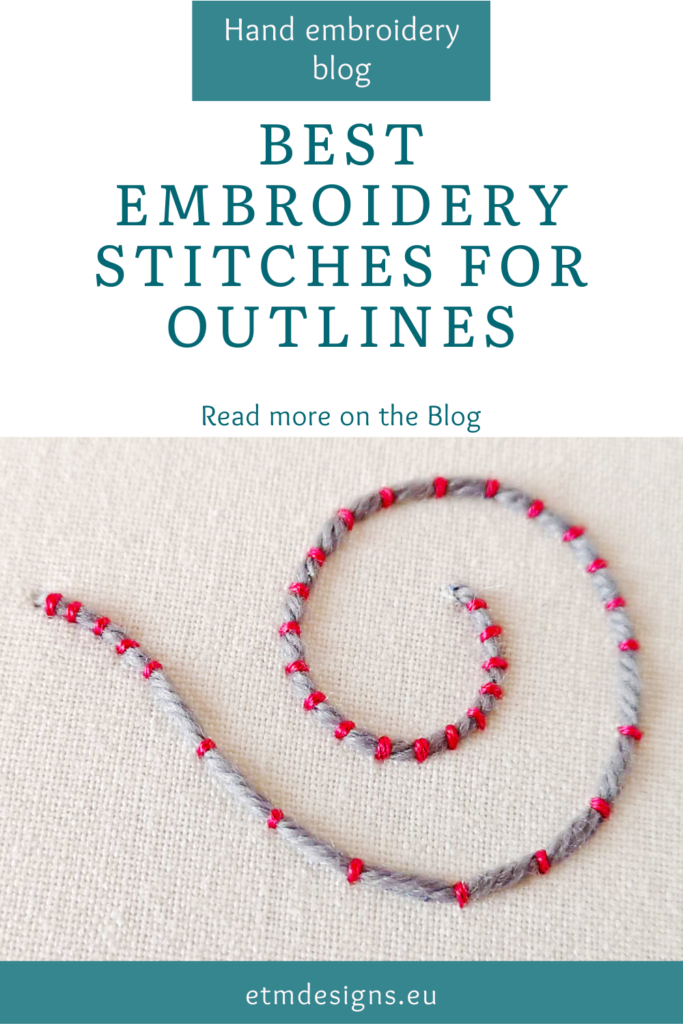


You May Also Like

Hand embroidery Filling stitches 1
3 February 2020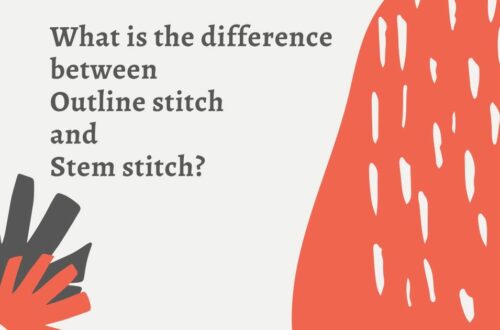
What is the difference between Outline stitch and Stem stitch?
20 May 2020